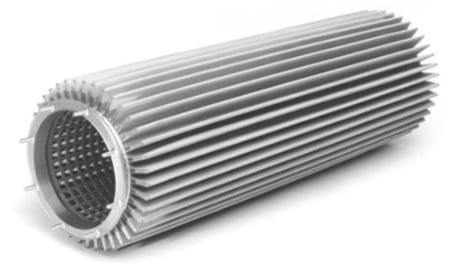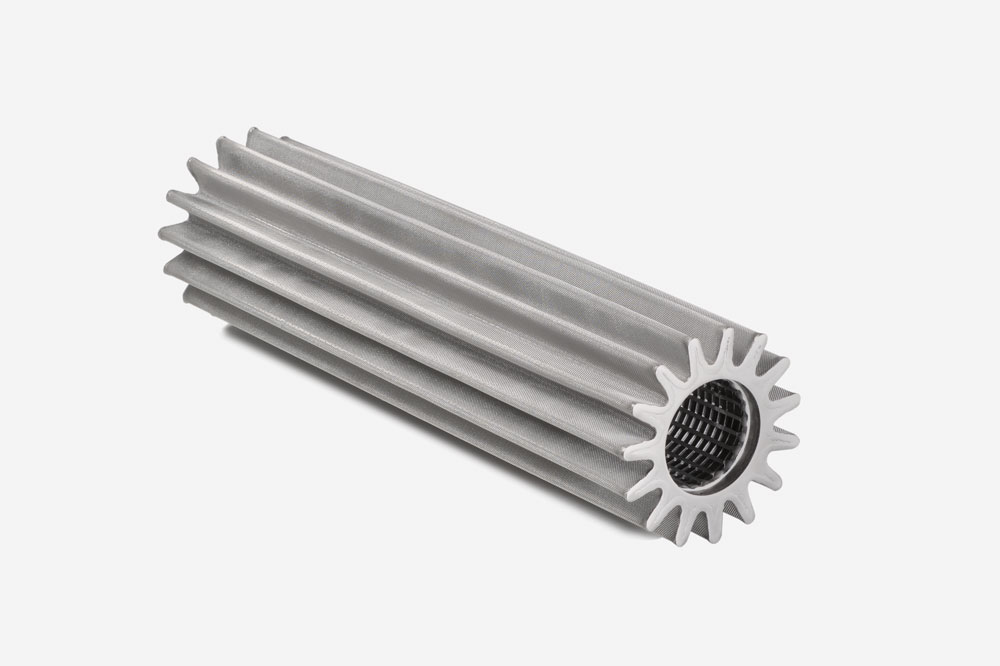Pleated Wire Mesh: Understanding the Pros and Cons
Woven wire mesh has become regarded as one of the most versatile filter media available. From the wire diameter to the profile, wire mesh filters can be customized to best accommodate the needs of your operation.
When working in the world of filtration, a general concern is the throughput of your filter components. You will want to apply fabrication techniques that alter the profile of the filter in a way that combats your throughput concerns while adhering to the dimensions of your equipment.
This is where pleated wire mesh excels.
For 150 years, W.S. Tyler has helped customers innovate the way they do things by helping them understand the fabrication process needed to produce wire mesh filters that perform.
With that, the following article was written to provide insight into what it means to pleat wire mesh and whether or not pleated wire mesh is right for you. It will cover:
- What it means to pleat wire mesh
- What the wire mesh pleating process consists of
- The benefits of using pleated wire mesh
- The drawbacks of using pleated wire mesh
What Is Pleated Wire Mesh?

Pleating is a fabrication process where you fold a material to create small and even folds, forming peaks and valleys. This creates another dimension in the mesh and allows for more surface area within the identical diameter of a cylindrical wire mesh filter.
What Does the Pleating Process Look Like?
Wire mesh can be pleated by a process of pressing the mesh between two rollers, which will shape it into uniform pleats. Over time this has gone from a rougher process to one with tightly controlled variables, namely the depth and frequency of the pleats.
The mesh itself also being a controlled variable with its different wire diameter, opening size, and alloy. Depending on the angle of the pleats and the alloy being pleated, you may need to anneal the mesh to prevent the pleats from breaking or cracking the mesh.
A good rule of thumb to follow is: the sharper the angles of the pleats, the more likely this is to be required.
Read the article below for more information regarding the annealing of wire mesh:
Why Should I Use Pleated Wire Mesh? What Are the Benefits?
There are several benefits to pleating mesh. For example, creating more surface area in a filter by adding pleats makes it more efficient by increasing the amount of debris it will hold, allowing you to build more filter cake.
By introducing a greater surface area, you reduce the chance of clogging the filter in a given period of time as well, allowing for a prolonged lifespan. The process will allow you to take less space to create more surface area, which can also be very helpful when working in applications where you have limited space.
What Limitations Are Associated With Pleated Wire Mesh?
As mentioned, some materials will have to be annealed to be able to form the pleats.
With any material, be it woven wire mesh, fabric, or paper, contouring the shape into pleats can change the aperture structure. If you don’t have a highly controlled process, this can create uneven pore sizes in your filter.
Pleating is also an added process, so a pleated filter will be more costly than a filter of the same diameter if you’re using the same material. You’re going to use more material for a product of the same diameter, so if the material used is a premium, you could considerably increase the cost of the filter.
NOTE: Some multi-layer materials don’t pleat well, so not every filter media will be available in your filter design.
Create Innovative Wire Mesh Filters With the Right Value-Added Services
Pleating is a wire mesh fabrication technique used to increase the filtration surface area of a wire mesh filter, helping to deliver optimal performance without altering the dimensions. While it works to improve throughput and reduce blinding, the effectiveness of the pleating process relies heavily on the mesh undergoing a reliable annealing process prior.
Now, it has been illustrated that pleating is a well-established way to fabricate a wire mesh filter; however, there’s a right tool for every job, so not every filter needs to be pleated. For this reason, you should get to know the other processes that you can apply when fabricating your next wire mesh filter.
W.S. Tyler has helped customers weave the capabilities of wire mesh into their operation for over 150 years and strives to leverage this experience to help you develop trust in the wire mesh components you use.
Read the following article to gain a better understanding of what post-weaving fabrication techniques make sense for you:
About Sam Badger
Sam has been a part of the W.S. Tyler family for three years and is currently a sales manager, overseeing our fabricated parts and customized filters. To help deliver best-in-class solutions, Sam works to bridge the gap between customers, both new and existing, and our engineering team. Additionally, Sam provides on-site servicing of the ALPINE Air Jet Sieve e200 LS, striving to learn your particle analysis operation to resolve any issues you encounter and ensure your equipment continues to produce accurate and repeatable results.



